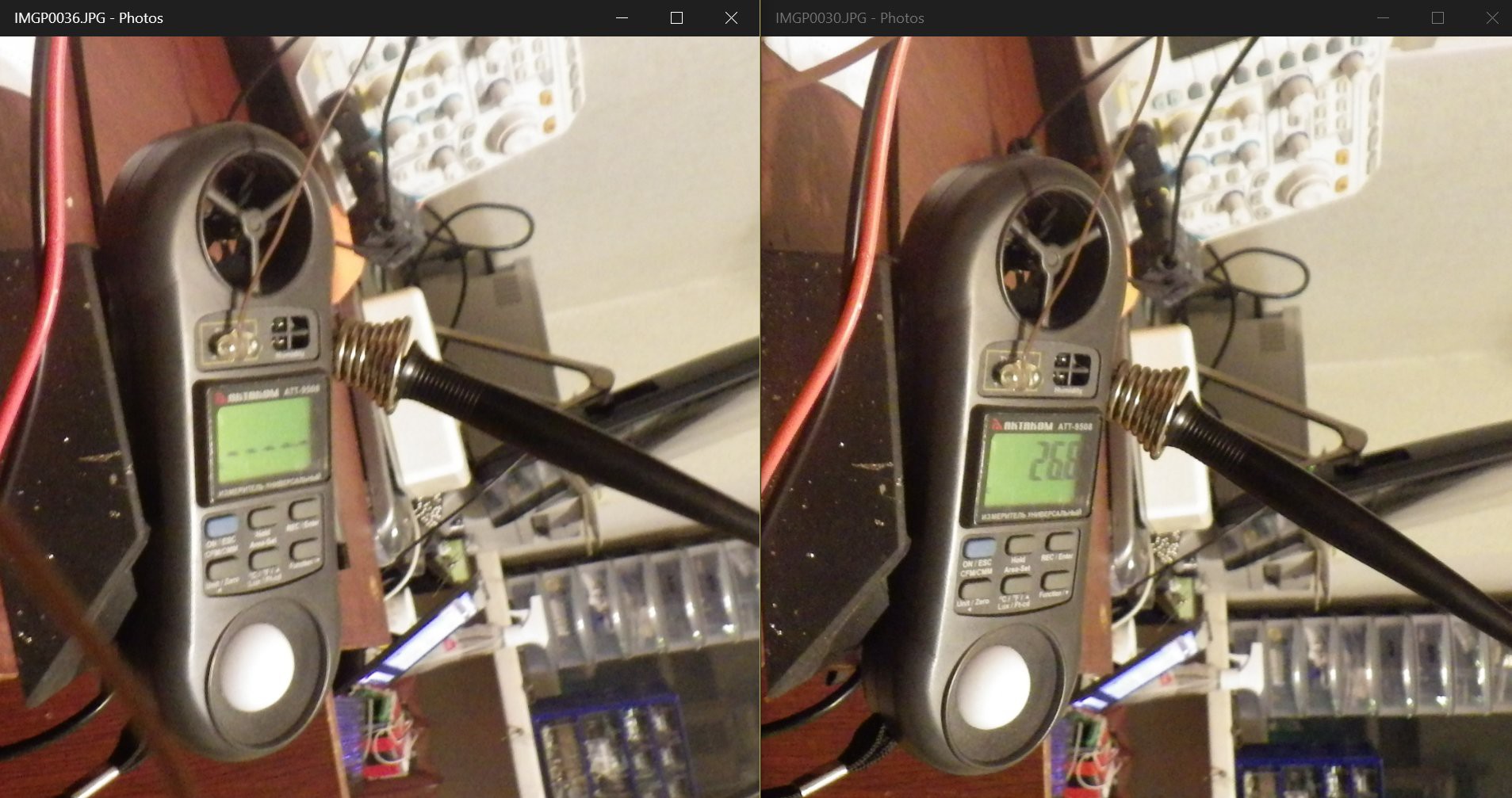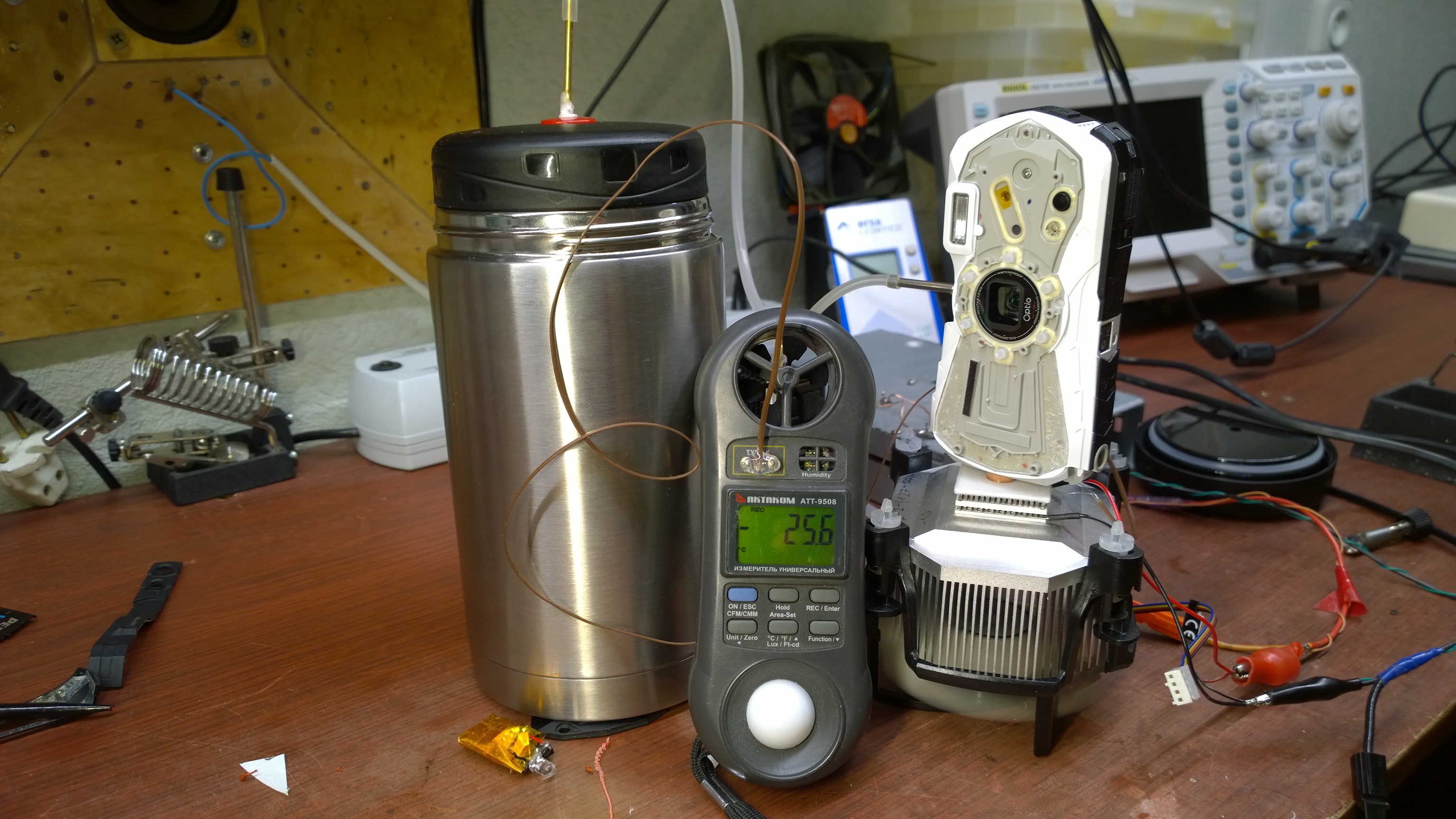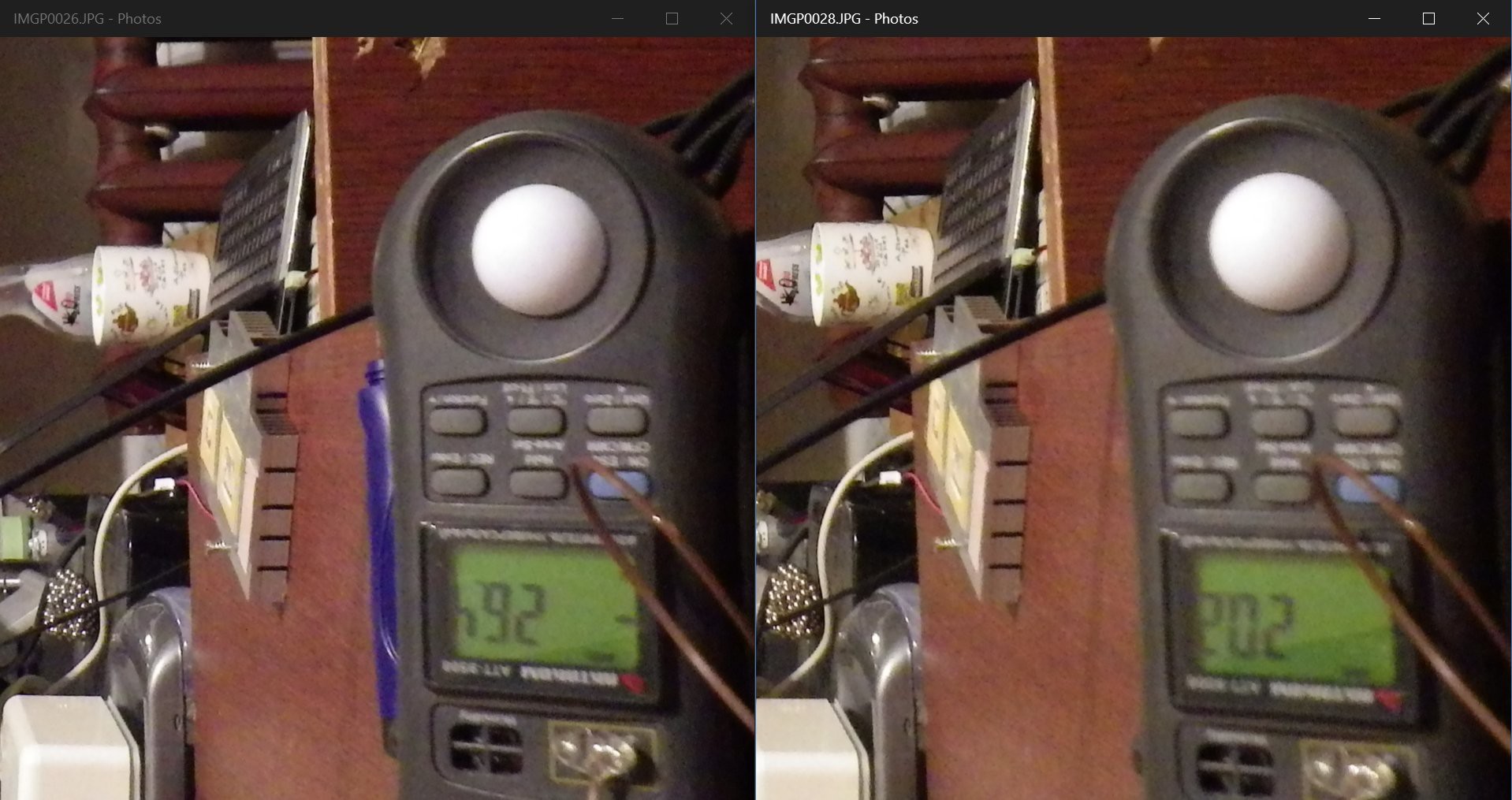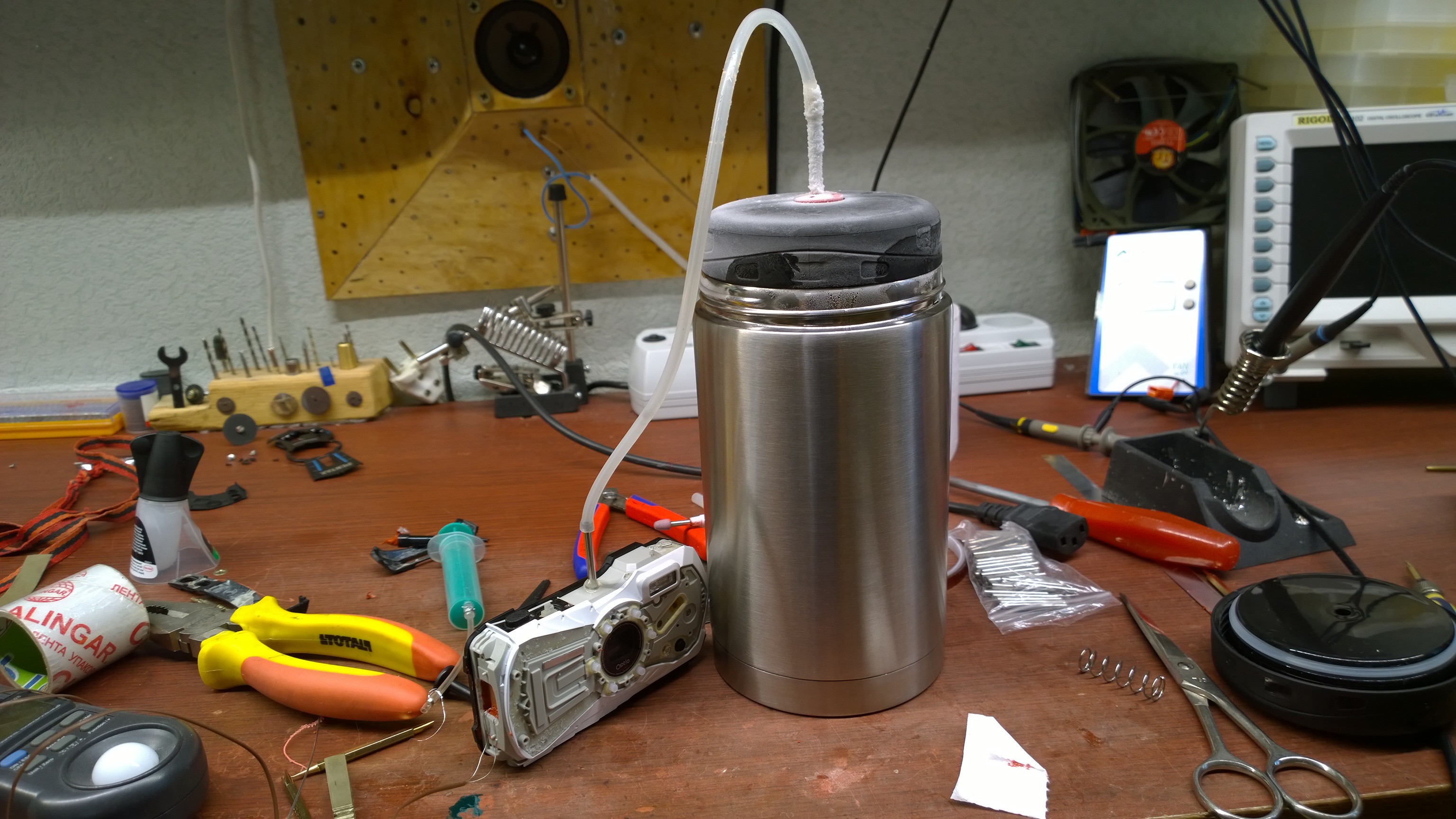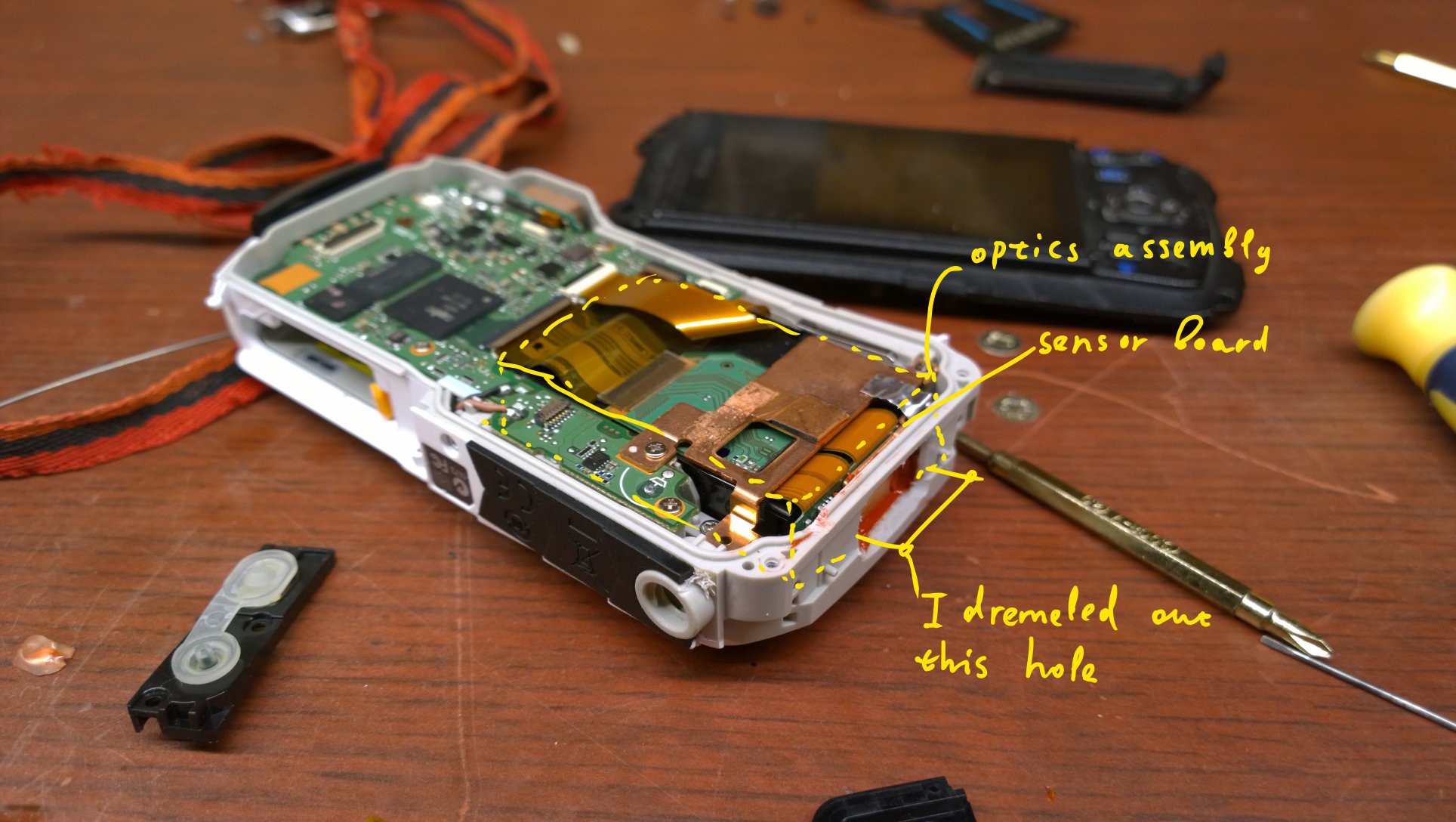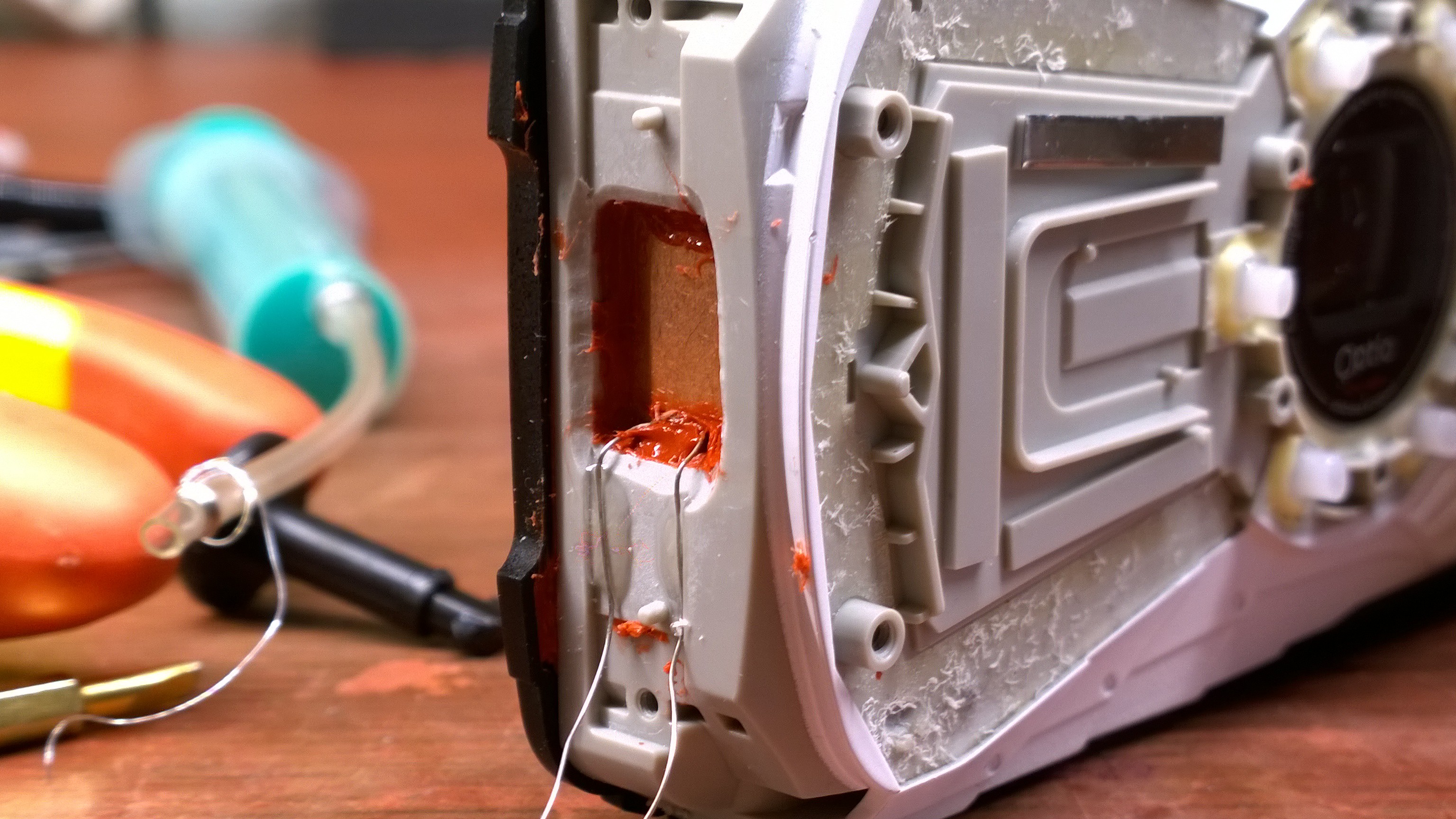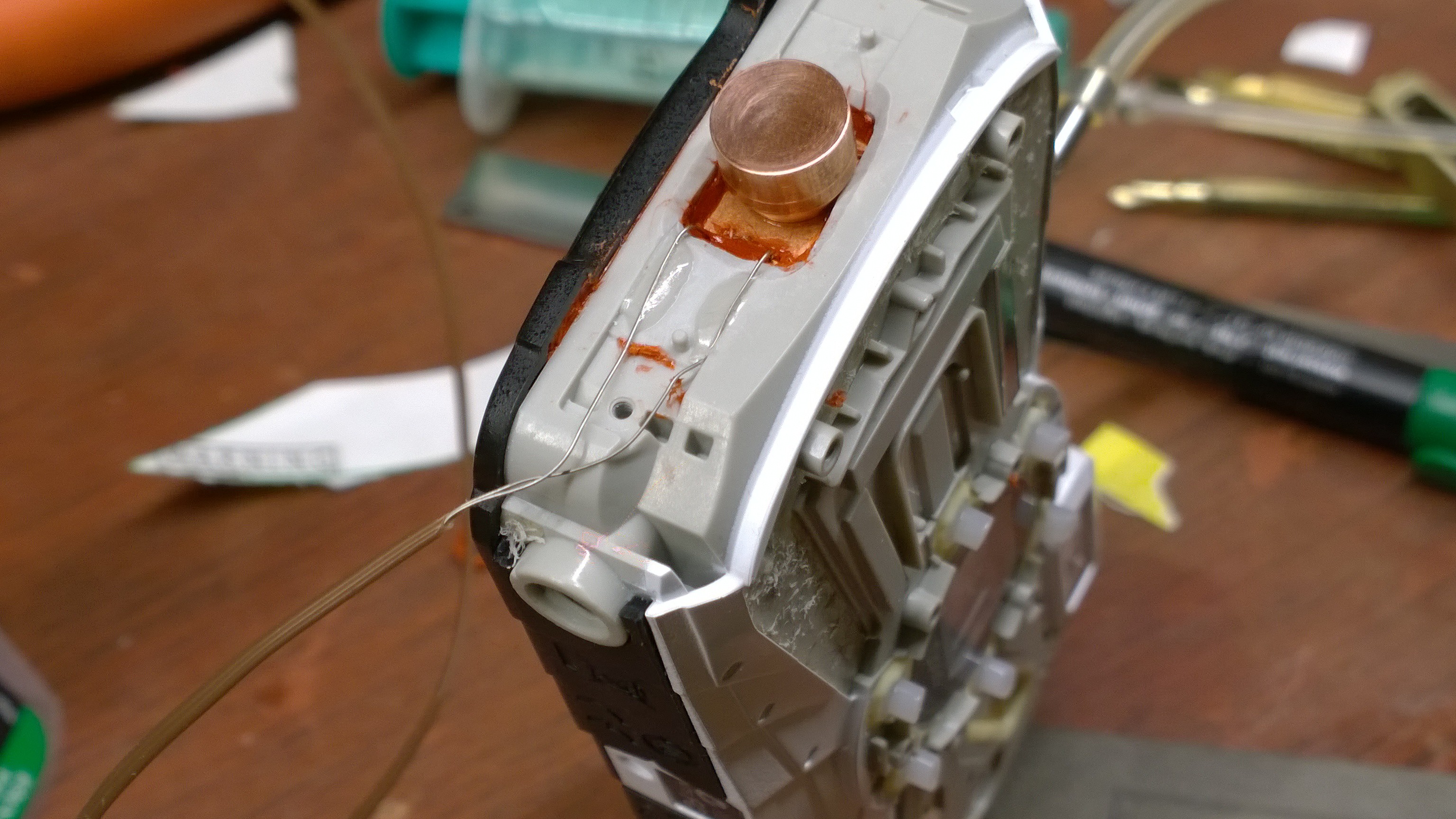-
Liquid nitrogen
03/31/2017 at 20:38 • 0 comments![]()
Result...
![]()
Well, there you have it. No improvement upon liquid nitrogen cooling. How does that make sense?? It actually looks like cooling made the noise worse...
-
Results.
03/30/2017 at 20:46 • 0 commentsCooling down...
![]()
![]()
I managed to cool it to -25°C. The element is supposed to reach almost 80K difference at 2A. So I expected something around -50°C. Maybe the thermal load is too high, or maybe the peltier element is damaged (I have had an accident with it, so it may very well be). Anyway, 45°C drop should be enough to notice.
I set up camera sensitivity to ISO 800. Switched off powerful LED light, and switched on my old room light fixture, which had only 2 bulbs populated out of 5 possible.
Results.
![]()
You should have noticed the whopping quality increase on one of the photos... Oh man, I'm disappointed. There is almost no improvement whatsoever!! WHY!!??
EPIC FAIL.
So, next step is to use the mighty liquid nitrogen. Stay tuned... Hopefully, the sensor can survive such a torture...
-
Sealing and purging moisture
03/30/2017 at 20:11 • 0 commentsTo dremel out the hole in the case, I had to remove all the guts from the camera. It wasn't straightforward at all. While prying stuff out, I:
* got shocked by flash capacitor. It happens every freaking time I take apart a camera. Will I ever learn?!!
* melted a piece of sealing ridge with soldering iron
* pierced sound membrane (a thin rubbery sheet covering a hole, with a speaker and a microphone behind it
So as you may have guessed, sealing the camera back was quite a challenge. Especially problematic was the hole in sound membrane, which I couldn't find, and took the case apart and back together several times before I finally found the source of leak.
Even after that, the camera is not sealed very good. If I suck the air out with vacuum pump, it takes about a minute for it to regain the atmosphere inside. But that's good enough for next step...
For getting rid of moisture inside, I added a nipple to the case (actually I did that before leak testing).
I also left a screw on the bottom unpopulated, which made a nice outlet hole. And connected the nipple to a vacuum flask filled with liquid nitrogen. The evaporating nitrogen has zero moisture in it, and it evaporates at just the right rate, so it was a perfect solution for blowing out all the H2O from within the camera.
![]()
After a few hours of purging, I was ready to freeze the sensor!
-
Exposing sensor for cooling
03/30/2017 at 19:51 • 0 commentsThe camera was like made for being hacked. Look!
![]()
Its sensor board is right against right-hand-side wall, and it has a copper heatsinking/spreading/shielding plate on top! So all I had to do was to dremel out a hole in the wall, and seal up the gaps with silicone caulk. Awesome...
![]()
![]()
Then I attached a thermocouple
![]()
Next, I turned a heat transfer copper peg on my lathe
![]()
and superglued it to the sensor plate.
![]()
Almost ready to go! Next up, sealing (which happened in parallel, but I separate it into a new project log).
 DeepSOIC
DeepSOIC
